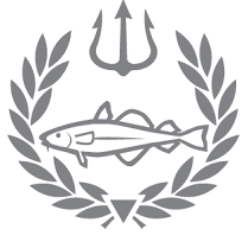On July 15th I boarded the Peace dive boat at 9 o’clock p.m. ready for my Optiquatics adventure. Optiquatics is a underwater photography training operation and DUI affiliate run by Joe Wysoki. This means, they let you dive with borrowed cameras and drysuits to your hearts content. Bunks were assigned to all the divers, and we began the process of transferring all of our gear onto the boat. As soon as my gear was on the boat I got to work assembling my tank and BC on the bench to the stern of the boat. I was told it is important to stake out ones spot on a live-aboard the night before. When I was done assembling my gear I looked around and was shocked to find the rest of the divers where still busy hauling giant Pelican cases onto the boat. Once they began to open the cases I understood why it was taking them so long. Every other diver on the boat was an accomplished underwater photographer who carried with him or her scads of camera equipment. The boat was soon over run by strange looking bits of metal and plastic that when assembled (an hour later) bore a only a very vague resemblance to a common camera. Before the other divers on the boat had even finished assembling their camera equipment I had passed out in my bunk. However, my sleep was not to last. The boat revved up its engines and departed for Catalina Island right at midnight, abruptly waking me. Apparently the waters in the Pacific were not calm that night. I was airborne several times during the night but managed to drift back to sleep. At seven o’clock the next morning the boats engines turned off. This was the sign that we had reached the dive site. I stumbled out of my bunk and made my way up to the deck to see not Catalina Island but a large rock protruding from the water, covered in cormorants, sea lions and pelicans, and white from the guano. Despite its appearance from above water, Ship Rock Island was a magnificent dive sight, as I found out less than an hour later. I went in with Andy and Steve, both experienced underwater photographers, though none of us carried cameras on this first dive. Joe had suggested that we use the dive as an orientation dive, just to get used to the area. I used my new light to turn all the sea life from brown and green to brilliant shades of red and purple. It was so colorful down there! There were garibaldi every where, they’re the California state fish, and a very fickle one at that. They will swim away in frightened fashion if you show any interest in them, but as soon as you are otherwise occupied they will swim directly in front of your mask, or camera as the case was the next day. On my first dive I saw sheepshead, Spanish shawl nudibranchs, an octopus, sea cucumbers, urchins, anemones and tons and tons of kelp. The kelp was beautiful and soothing, swaying only slightly in the current. After forty five minutes or so of the multi-level dive, we returned to the surface and enjoyed the Peaces magnificent platform, which requires you to only flop onto it while the crew removes your fins and sends you up the ladder. This was perhaps the best and easiest time I have ever had exiting the water on a dive boat. The rest of the day continued in a beautiful mixture of eating and diving. Every time I got out of the water there was new food prepared compliments of Trish the chef. Not only was the supply of food continuous, it was good. On the first day I completed four dives, the first three at Ship rock and the last closer to shore, in an area with much more kelp, some eels, and lots of bottles. Most of the dives where between 40 and 60 feet. Though the other divers brought their cameras along after the first dive, I used the entirety of the first day to familiarize myself with the diving conditions. That night, nearly everyone on the boat went on an expedition to Avalon, a city on Catalina Island. I elected to stay behind being that it was 9 o’clock on a Sunday night and I didn’t think much could be open. I was pleased to find out that the real show that night was just off the sides of the boat. Perhaps 30 minutes after the boat had moored I was enjoying watching the large silvery fish chilling next to the boat. A moment later, the fish I was watching erupted out of the water, and took flight, very literally. It was a flying fish, in fact, the boat was surrounded by them. For some reason at this time they all deemed it necessary to fly around, every which way. I soon discovered the reason for their activity. A sleek dark form could be seen arcing in and out of the water after the fish. It was a juvenile sea lion, taking hunting lessons from his mother. The sea lions corralled the fish towards the boat, scared them into the air and awaited the sickening crack of the fish flying into the boat, indicating the presence of a tasty and unconscious meal. The sea lions did this for hours until it seemed like there could not possibly be any fish left. The baby sea lion had some difficulty swallowing his fish and would toss them around, trying to grab a mouthful. On fish flew onto the swim platform before drifting a foot off and promptly being eaten. Eventually it was time for bed, though from the cabin the cracks of the fish flying into the boat could still be heard.
